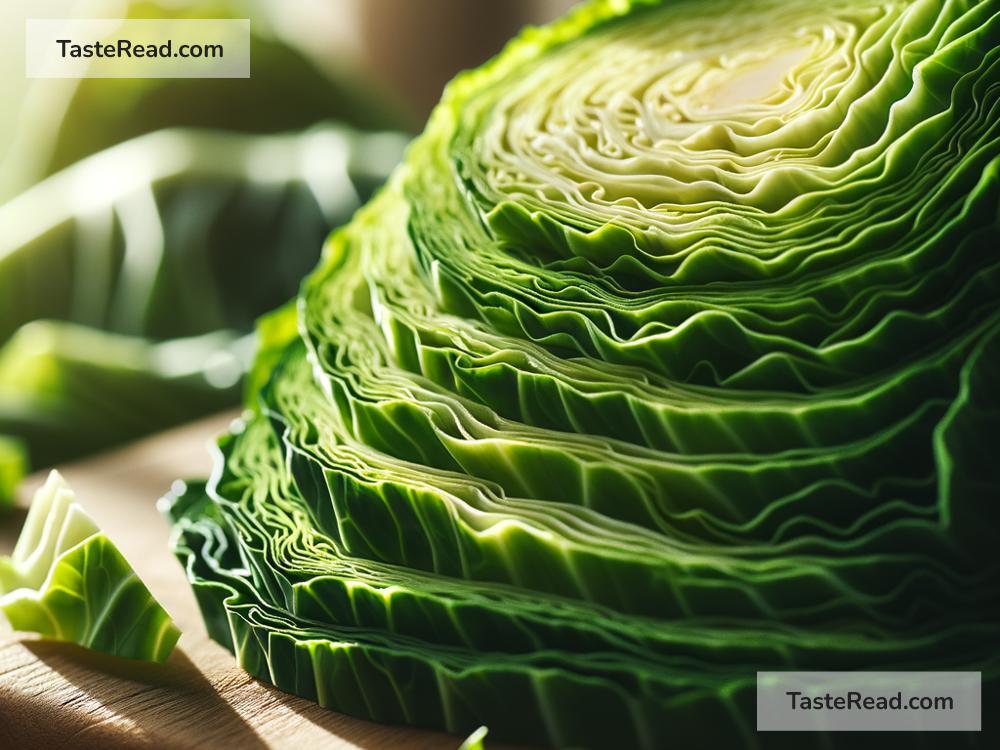The Truth About Cabbage and Its Crunchy Texture
When people think of cabbage, they often picture the humble green or purple vegetable sitting in the produce aisle. It’s not flashy like avocados or sweet like strawberries, but cabbage has a lot going on beneath its simple appearance. It’s versatile, nutritious, and—let’s face it—delightfully crunchy! In this blog post, we’re going to uncover the truth about cabbage and explore what makes it such a fun vegetable to eat.
What Exactly Is Cabbage?
Cabbage is a leafy vegetable that belongs to the Brassica family, which includes broccoli, cauliflower, and kale. It comes in different varieties—green cabbage, red (or purple) cabbage, and savoy cabbage, to name a few. Each type has its own unique look and texture, but the crunchiness is something they all share. That crunch is why cabbage is a favorite for salads, stir-fries, and even fermented foods like sauerkraut and kimchi.
The Science Behind the Crunch
Have you ever wondered why cabbage is so crunchy? The truth lies in its structure! Cabbage leaves are made of plant cells, and inside those cells are water stored in rigid compartments called vacuoles. Additionally, the cell walls of cabbage are thick and strong, made of cellulose—a type of fiber. When you bite into raw cabbage, the force of your teeth breaks through those firm cell walls, releasing the water and creating the satisfying crunch.
The crunch disappears somewhat when cabbage is cooked because heat breaks down the firm cellulose in the cell walls. For example, steamed or boiled cabbage has a softer texture and loses its crispness. If you want to maintain the crunch, stir-frying cabbage quickly or pickling it is a better option.
Cabbage’s Secret Superpowers
Cabbage isn’t just about crunch—it’s packed with health benefits that might surprise you. Low in calories but full of nutrients, it’s a powerhouse vegetable that deserves more love. Here are some of its key benefits:
-
Rich in Vitamins and Minerals: Cabbage is loaded with vitamin C, an antioxidant that boosts your immune system and promotes healthy skin. It also has vitamin K, which supports bone health and helps your blood clot properly.
-
Supports Digestion: The fiber in cabbage is great for your stomach. It helps keep your digestive system running smoothly and makes you feel full for longer.
-
May Help Reduce Inflammation: Some compounds in cabbage, like anthocyanins (found in red cabbage), can help reduce inflammation in the body. This is great for overall health!
-
Great for Weight Management: Since it’s low in calories but high in nutrients, cabbage makes a filling addition to any meal without packing on extra calories.
-
Full of Phytochemicals: Cabbage contains special plant compounds called phytochemicals that are thought to have cancer-fighting properties. Studies suggest that regularly eating cabbage and other Brassica vegetables may lower the risk of certain types of cancer.
Crunchy Ways to Enjoy Cabbage
Cabbage’s crunchy texture makes it so versatile, and there are countless ways to prepare it. Here are some of the most popular ways to enjoy this underrated vegetable:
-
Coleslaw: Crisp, shredded cabbage is the star of this classic salad. Mix it with carrots, mayonnaise, and a splash of vinegar for a refreshing side dish.
-
Stir-Fry: Quickly stir-frying cabbage with garlic, soy sauce, and other veggies is a simple way to enjoy its crunch while adding loads of flavor.
-
Soup: Cabbage is often used in hearty soups, like cabbage soup or borscht. While it softens during cooking, it still adds a pleasant texture.
-
Tacos: Shredded cabbage makes a perfect topping for tacos, adding crunch and freshness to complement the juicy filling.
-
Fermented: Fermented cabbage dishes like sauerkraut and kimchi are not only crunchy, but they’re also packed with probiotics for gut health.
Tips for Picking and Storing Cabbage
Choosing a good cabbage is easy if you know what to look for. The best cabbages are firm and heavy for their size, with tightly packed leaves. Avoid cabbages with loose or wilted outer leaves or dark spots, as these are signs of age.
To keep cabbage fresh, store it in the fridge in a plastic bag or wrap. Whole cabbage can last for up to two weeks when kept cool. Once you cut it, you’ll want to use it sooner—within a few days—to maintain its quality.
The Unsung Hero of Vegetables
Cabbage might not get as much attention as kale or spinach, but it’s just as healthy and much more versatile. And let’s not forget its irresistible crunch! Whether it’s raw in a salad, lightly stir-fried in a meal, or fermented into something tangy, cabbage brings texture and flavor to the table.
So the next time you’re at the grocery store, don’t overlook this crunchy, nutrient-packed vegetable. Experiment with new recipes and ways to enjoy it—your taste buds (and your body) will thank you! After all, cabbage isn’t just a vegetable—it’s a crunchy, delicious wonder.


